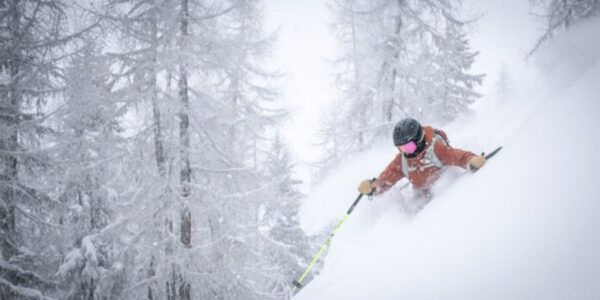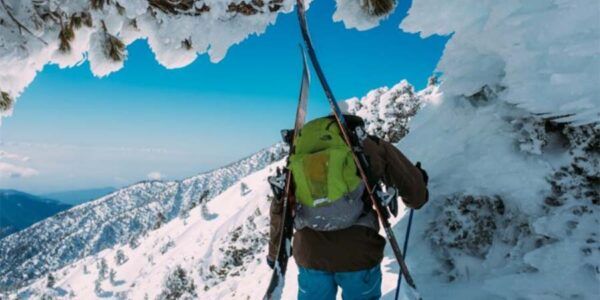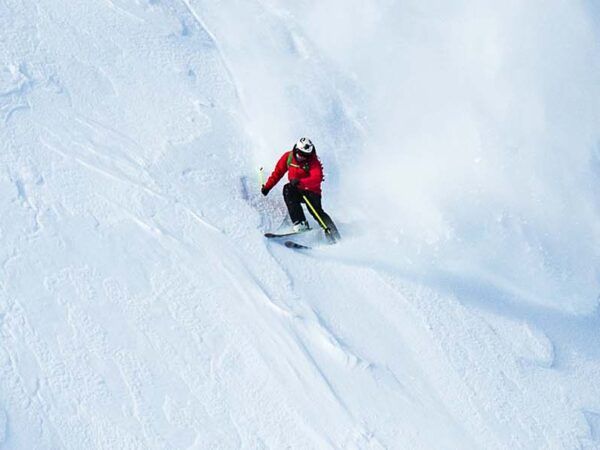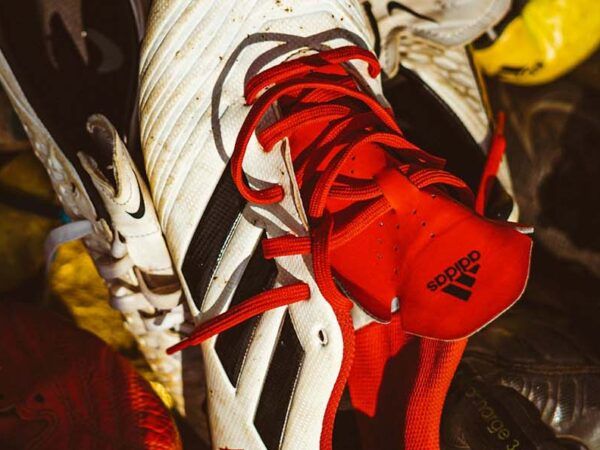What is backcountry skiing?
Backcountry skiing, synonymous with freedom and adventure, is gaining in popularity. But this freedom doesn’t mean you can throw yourself blindly into the sport without any preparation. It’s essential to be well equipped and informed before taking up this sport off the beaten track.
Being in good physical shape
Backcountry skiing is thought to be a downhill sport, but mostly, it is an uphill sport! In fact, the climb takes more than 90 % of the time! Hence the importance of being in good physical shape and being adequately prepared.
In Quebec, the elevation variation for practising backcountry skiing is 300 metres, which corresponds to around one hour of climbing. What do you need to do to prepare for it? Be active during the fall so that you are in good physical shape when winter comes. Various activities such as walking, mountain hiking and cycling are ideal. You could also consult a therapist to implement a specialized training programme for backcountry skiing.
Getting Comfortable on Your Skis Before Starting Backcountry Skiing
Even though backcountry skiing is accessible, it nonetheless remains that you should acquire a degree of comfort before going off-piste. A backcountry skier should first be able to:
- Ski in any level of difficulty on the slopes.
- Ski in all types of snow conditions.
- Be sufficiently fit to go up the slope on skis.

For skiers whose skills are not sufficient, they can take lessons to prepare for backcountry skiing or simply to improve their skiing skills.
Knowing how to avoid or deal with avalanches
In addition to being aware of the risks to which the backcountry skier is exposed, he or she should have the basic knowledge of how to deal with an avalanche which may occur during the excursion. Given that the sport is enjoyed in uncontrolled terrain, avalanches are one of the risks associated with the sport.
Before planning a trip to avalanche-prone areas, it is strongly recommended that you take a safety course on how to respond in case of such event.
Avalanches are less likely to occur in wooded areas, as is the case in some of the Quebec ski resorts. The most important aspect is to always be informed beforehand so as to minimize the risks.
Having the right equipment
The right equipment is essential to safely enjoy your activity. At the very least, to enjoy backcountry skiing, it is essential to have skis, bindings, poles and boots specifically designed for this type of activity. The use of a helmet is strongly recommended!
To fully enjoy the experience and to prevent injury, ensure that your equipment is properly fitted and maintained. Boots should be comfortable, bindings should be snug and functional, and climbing skins must be properly fitted and stored.
In avalanche-prone areas, you must have the following proper equipment:
- An avalanche victim detector.
- A shovel.
- A probe.
If you become addicted to this sport, you will be able to purchase various specialized equipment to enhance your experience and performance.
Preparing for the adventure
Enjoying backcountry skiing also means taking the time to prepare for the adventure and its wilderness aspect. In fact, the slopes are neither safe, nor marked, nor patrolled.
Be aware that when you are skiing downhill, there must be a sufficient level of snow on the ground to avoid unpleasant surprises such as tree trunks and rocks. Always be on the lookout for obstacles when you are in a wooded area.
The harshness of winter means that you should take precautions before embarking on a backcountry skiing trip. Proper preparation and safety are paramount.
Before the excursion
- Travel in a group (at least three people).
- Bring a helmet and a pair of ski goggles.
- Bring extra clothing to deal with varying weather conditions (toque, mittens, warmer clothes).
- Bring a whistle, flashlight, first-aid kit, and emergency sled with you when skiing off-piste.
- Check the weather forecast for your destination.
- Bring food and water, no matter how long you plan to be out on your excursion.
- Check the condition of your equipment.
- Take avalanche gear with you if you travel to an avalanche-prone area.
- Ensure that you are prepared to end your activity two hours before dark.
- Notify someone close to you of your outing. Provide them with the exact details of your destination with instructions to contact emergency services if you do not return at a specified time.
- Warn your ski touring partners of the risks associated with backcountry skiing.
During the activity
- Never rely on your cell phone. Networks may not be available. In addition, cell phone batteries never last very long in the cold. Tip: Put your cell phone in a Ziploc bag with a hand warmer.
- Bring a map of the area.
- Estimate how long it will take to complete your excursion.
- Follow the signs and obey the restriction notices.
- Boil or treat spring water before drinking.

Start with beginner-level trails
As in any sport, when starting backcountry skiing, it is safer to begin on slopes that have a low difficulty level.
You should therefore choose an itinerary that:
- Has a slight incline (no more than 25 degrees).
- Has little or no deep snow (to reduce the risk of avalanches).
- Is without rock bars or rocks.
- Has no crevices.
In short, you avoid adding extra challenges so that you can concentrate on your technique and learn the basics. Upon mastering these elements, you will have the opportunity to add new challenges to your excursion.
Choose to hire the services of a guide as necessary
As a beginner, it is best to seek the services of a professional guide or backcountry ski instructor.
He or she will be able to give you expert advice on:
- Gliding techniques.
- Equipment uses.
- Nivology (study of snowpack).
- How to safely navigate a route.
It is always safer and recommended to use a guide or instructor for a new itinerary, regardless of your competence level.
Your therapist will also be able to provide advice on how to practice this new sport in order to avoid injuries and to enjoy it in a safe manner.
References
https://www.sepaq.com/blogue/conseils-randonnee-alpine-jac.dot




